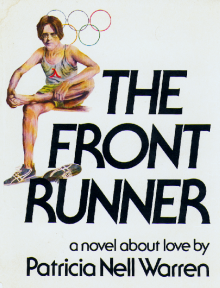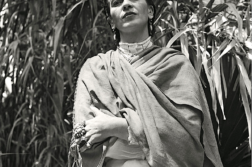SEVENTEEN YEARS AGO, on June 23, 1992, sculptor George Segal (1924–2000) witnessed the installation of his first outdoor public sculpture in Manhattan, the city center that had inspired much of his work and had made him internationally famous. Titled Gay Liberation, the piece had taken twelve years to find its intended home within the triangle of Christopher Park in Greenwich Village, just across Christopher Street from what had been the Stonewall Inn. 
Cast in white bronze, the standing gay male couple and their lesbian counterparts, who were seated on two park benches included in the composition, managed to ruffle feathers of every stripe. The proposed public sculpture had been announced in The New York Times on July 21, 1979, with nary a response pro or con. But in the following months, as the maze of community and city approvals began to be negotiated, opinions grew increasingly polarized and loud.
Protesting gays thought it wrong because only white models in their early thirties had been employed, and the white (albeit Jewish) artist was straight (though the models were all openly gay). Others felt, according to a flier distributed in the West Village, that “such a memorial is premature in that our battles are not yet won and that liberation has only just begun.” Why hadn’t the GLBT community been involved or consulted? Why hadn’t a gay or lesbian artist been enlisted? Many non-gay critics didn’t want a public space to be occupied by a sculpture that alluded to homosexuality, much less a depiction of same-sex couples, while fully clothed, actually touching one another. For those detractors, it was bad enough that actual homosexuals roamed the West Village streets.
Despite all the brouhaha, Gay Liberation was eventually installed as a permanent monument in Christopher Park, with a second casting set on the grounds of Stanford University in Palo Alto, California. It, too, was unfavorably received by many locals, and was later attacked physically and disfigured by drunken college students (who were subsequently identified and punished). The sculpture has been denounced by some art historians and culture mavens as boring and “deadeningly somber,” and maligned by gay activists as too conservative a depiction of homosexual affection.
Still, it continues to inspire gay and lesbian visitors to be proud of who they are. Forty years after the Stonewall Riots of June 1969, Gay Liberation commemorates more than the riots themselves. For many older gay men and lesbians, it represents their emergence from an earlier era when it would have been impossible for two men or two women to engage in the behavior the statues depict, however understated, even in Greenwich Village. For those who enjoyed the sexual and cultural abandon of the 1970’s, it’s a reminder of youthful possibility and hope. For those who lived through the first wave of the AIDS epidemic, it’s a memorial to the thousands of lives that were tragically lost.
For today’s gay and lesbian young people, who may not be fully aware of the long history of our struggle for equality and acceptance, it’s a public emblem of acknowledgement that we exist and belong. For me personally, it’s a reminder of a dear friend and ally, a fine and deeply intelligent artist, and a truly gentle, caring man: George Segal.
David B. Boyce, curatorial consultant to the New Bedford (Massachusetts) Art Museum, was one of the four models used in the creation of Segal’s sculpture.





Discussion1 Comment
Pingback: Trans Vandals Deface the Gay “Stonewall Monument” with Insane Blackface to protest a Movie they Have Not Seen | GenderTrender